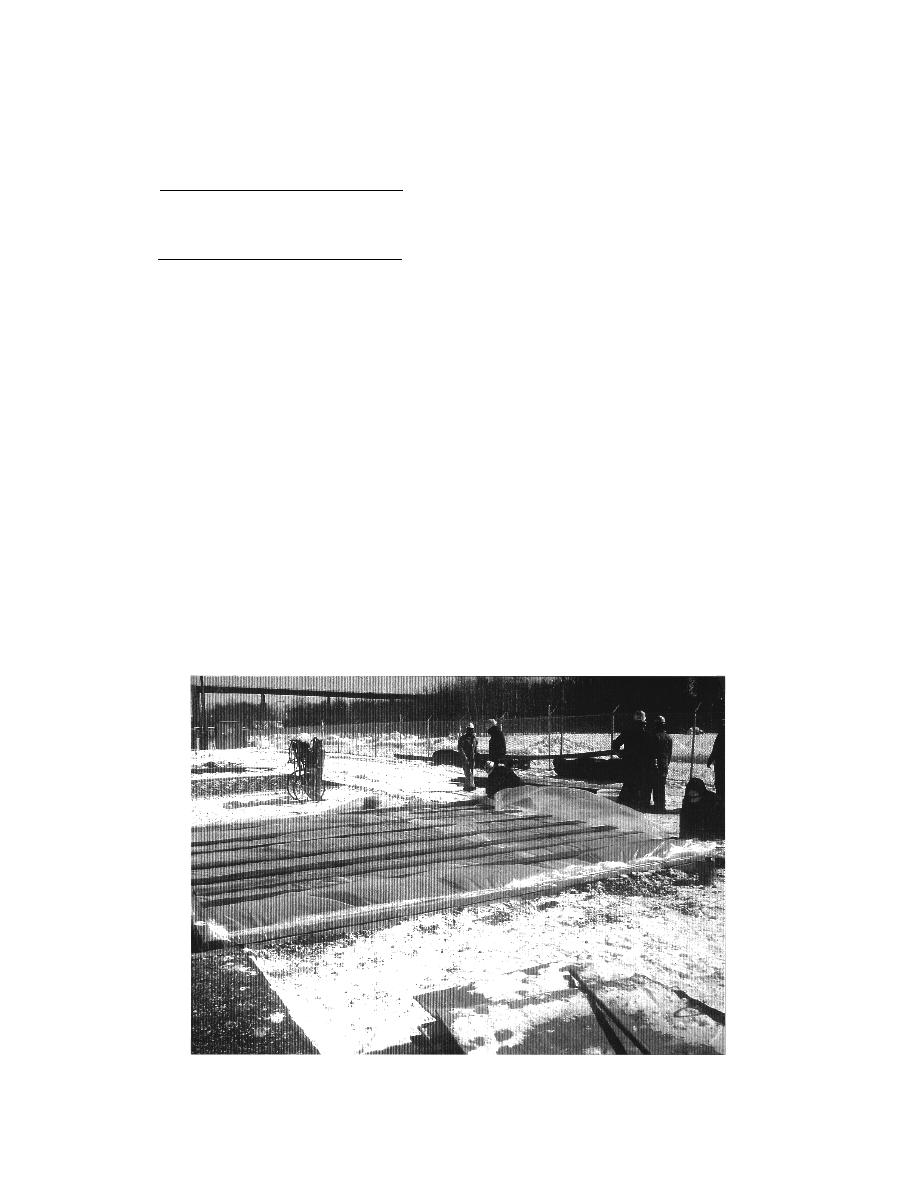
Table 3. Properties of fresh concrete.
thickness of each slab, beginning at the top sur-
face. An additional thermocouple was posi-
Temperature
tioned away from the concrete, 15 cm above
inside the
grade and out of direct sunlight, to record the air
Slump
Air
Unit wt. concrete
(C)
(kg/m3)
Mix
(cm)
(%)
temperature. For this report only the data from
the top surface thermocouples are provided be-
Control
5.1
3.2
2307
12.2
cause the top surface was the coolest portion of
EY11L
14
3.2
2307
3.3
EY11H
14
4.7
2275
3.3
each slab. It cooled quicker and experienced wid-
DP
12.7
8
2163
7.2
er temperature excursions than the rest of the
slab, including the bottom surface, which was in
contact with the gravel. Figure 4 shows the tem-
Placing and curing concrete
The concrete for all sections was placed and
peratures of the slabs' top surfaces and the tem-
finished in the normal fashion. No extra effort or
perature of surrounding air. A separate graph is
skill was required to work outdoors compared to
shown for each concrete section. The recording
doing the same work inside the heated shelter.
period for each concrete section began at the time
The workers found the freedom of movement
shown in Table 2 and extends through midnight,
better outdoors than in the temporary enclosure.
22 March. Figure 4 also shows the temperatures
from two points near the bottom surface of one
The heated shelter was useful as a warming hut
slab, and the temperature of one 7.6- 15.2-cm
between concrete deliveries. The workers stayed
sample cylinder exposed to the cold.
outdoors for approximately 2-hour periods. Ex-
Figure 4a shows the temperatures of the con-
cept for the heated control section, the concrete
trol concrete and the heated air in the shelter. The
was thermally unprotected. A plastic sheet was
shelter was heated for several days before 15
placed over the two exposed concrete sections
March to thaw the frozen ground. To facilitate
for 7 days to minimize water loss (Fig. 3). The
placement of the control concrete, two walls of
concrete in the two shelters was uncovered.
the shelter were removed at 10:30 a.m. on 15
March and replaced at noon. The air inside the
Thermal history
shelter cooled to 6.6C by the time concreting
Thermocouples connected to data loggers
started, but, after the walls were replaced, the
monitored concrete and air temperatures. Five
shelter warmed up again. However, the shelter
thermocouples were equally spaced through the
Figure 3. Plastic was placed over the antifreeze concrete cured outdoors.
4



 Previous Page
Previous Page
